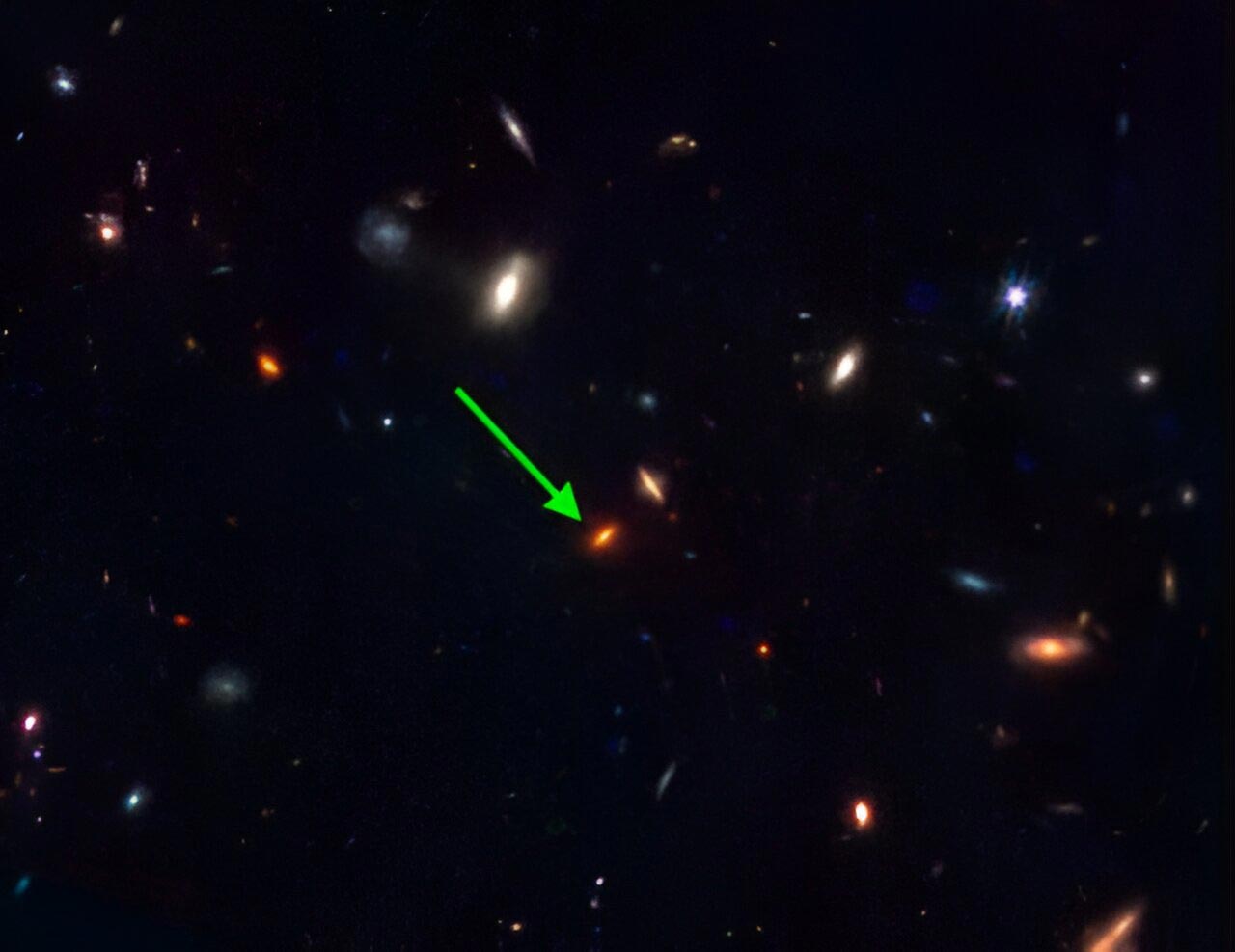Our understanding of how galaxies form and the nature of dark matter could be completely upended, after new observations of a stellar population bigger than the Milky Way from more than 11 billion years ago that should not exist.
A paper published in Nature details findings using new data from the James Webb Space Telescope (JWST). The results find that a massive galaxy in the early universe – observed 11.5 billion years ago (a cosmic redshift of 3.2) – has an extremely old population of stars formed much earlier – 1.5 billion years earlier in time (a redshift of around 11). The observation upends current modeling, as not enough dark matter has built up in sufficient concentrations to seed their formation.
Swinburne University of Technology’s Distinguished Professor Karl Glazebrook led the study and the international team that used the JWST for spectroscopic observations of this massive quiescent galaxy.
“We’ve been chasing this particular galaxy for seven years and spent hours observing it with the two largest telescopes on earth to figure out how old it was. But it was too red and too faint, and we couldn’t measure it. In the end, we had to go off the Earth and use the JWST to confirm its nature.”
NASA’s James Webb Space Telescope is the successor to the Hubble Space Telescope, the most powerful infrared science observatory ever to be sent into space. From its orbit nearly a million miles from Earth, Webb studies some of the most distant objects in the universe. Credit: NASA
The formation of galaxies is a fundamental paradigm underpinning modern astrophysics and predicts a strong decline in the number of massive galaxies in early cosmic times. Extremely massive quiescent galaxies have now been observed as early as one to two billion years after the Big Bang which challenges previous theoretical models.
Distinguished Professor Glazebrook worked with leading researchers all over the world, including Dr. Themiya Nanayakkara, Dr. Lalitwadee Kawinwanichakij, Dr. Colin Jacobs, Dr. Harry Chittenden, Associate Professor Glenn G Kacprzak and Associate Professor Ivo Labbe from Swinburne’s Centre for Astrophysics and Supercomputing.
“This was very much a team effort, from the infrared sky surveys we started in 2010 that led to us identifying this galaxy as unusual, to our many hours on the Keck and Very Large Telescope where we tried, but failed to confirm it, until finally the last year where we spent enormous effort figuring out how to process the JWST data and analyze this spectrum.”
Dr. Themiya Nanayakkara, who led the spectral analysis of the JWST data, says, “We are now going beyond what was possible to confirm the oldest massive quiescent monsters that exist deep in the Universe.”
“This pushes the boundaries of our current understanding of how galaxies form and evolve. The key question now is how they form so fast very early in the Universe and what mysterious mechanisms lead to stopping them from forming stars abruptly when the rest of the Universe doing so.”
Associate Professor Claudia Lagos from the University of Western Australia node of the International Centre for Radio Astronomy Research (ICRAR) was crucial in developing the theoretical modeling of the evolution of dark matter concentrations for the study.
“Galaxy formation is in large part dictated by how dark matter concentrates,” she says. “Having these extremely massive galaxies so early in the Universe is posing significant challenges to our standard model of cosmology. This is because we don’t think such massive dark matter structures as to host these massive galaxies have had time yet to form. More observations are needed to understand how common these galaxies may be and to help us understand how truly massive these galaxies are.”
Distinguished Professor Glazebrook hopes this could be a new opening for our understanding of the physics of dark matter.
“JWST has been finding increasing evidence for massive galaxies forming early in time. This result sets a new record for this phenomenon. Although it is very striking, it is only one object. But we hope to find more, and if we do this will really upset our ideas of galaxy formation.”
Reference: “A massive galaxy that formed its stars at z ~ 11” by Karl Glazebrook, Themiya Nanayakkara, Corentin Schreiber, Claudia Lagos, Lalitwadee Kawinwanichakij, Colin Jacobs, Harry Chittenden, Gabriel Brammer, Glenn G. Kacprzak, Ivo Labbe, Danilo Marchesini, Z. Cemile Marsan, Pascal A. Oesch, Casey Papovich, Rhea-Silvia Remus, Kim-Vy H. Tran, James Esdaile and Angel Chandro-Gomez, 14 February 2024, Nature.
DOI: 10.1038/s41586-024-07191-9

Dr. Thomas Hughes is a UK-based scientist and science communicator who makes complex topics accessible to readers. His articles explore breakthroughs in various scientific disciplines, from space exploration to cutting-edge research.







/cdn.vox-cdn.com/uploads/chorus_asset/file/25426987/Xbox_Games_Showcase_2024_Hero_a6dc9c9fda53f2ec5484.jpg)
